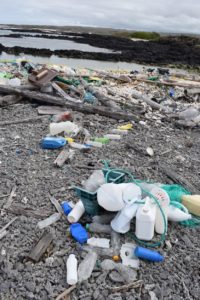
Plastic pollution in the world’s oceans is a growing problem, especially for island archipelagos like the Galapagos Islands. These islands are unique in their science history and biodiversity, but unfortunately receive significant amounts of marine plastics from non-local sources. How can we make the Galapagos the world’s first marine protected area to manage the threat of marine plastics?
Our goal

© Andy Donnelly
Our goal is to develop a predictive technology that will allow the Directorate of the Galapagos National Park to focus cleanup efforts and to efficiently remove plastic pollution before it impacts sensitive wildlife and habitats. Combining ocean data, wind, wave and tidal models and using a particle tracking tool, we will set out to answer questions such as where does the plastic come from, how does it get there and when does it arrive? These findings will help us to develop a marine plastics forecast: a ‘where and when to clean up’-tool for the local park rangers. The aim is to show that the methods developed for the Galapagos can be applied to island nations and archipelagos worldwide to tackle the global plastic pollution challenge.
